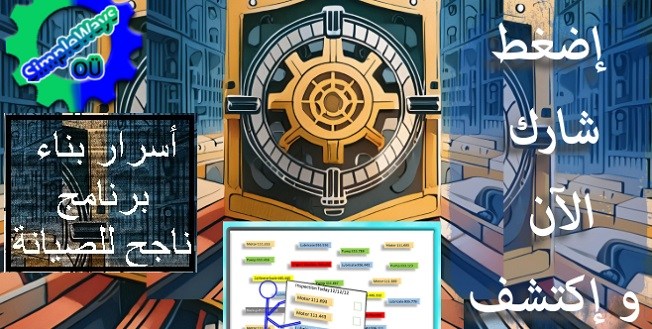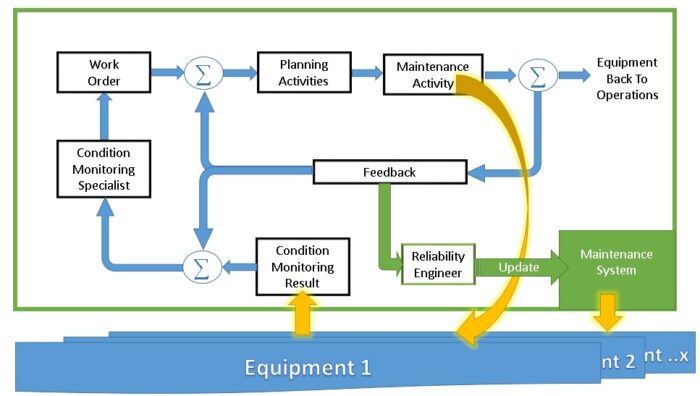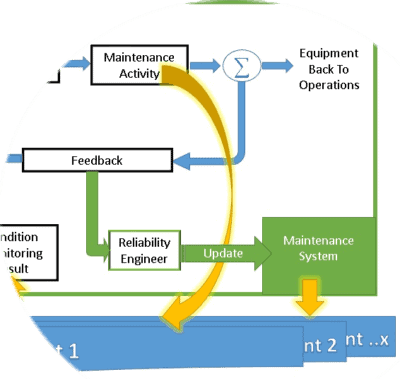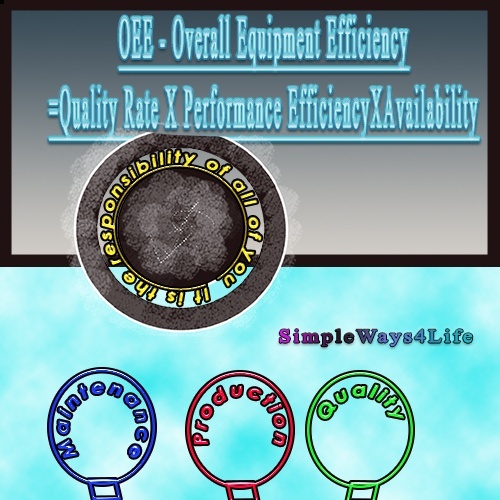The information is the blood of the maintenance, the work orders are the veins and arteries and its heart is The System , with Capital “S”.
Definition of a System
We shall start by Literal definitions of what a System might be. Why? Because, the human mind comprehends things better when it knows the meaning of the words.
A set of things working together as parts of a mechanism or an interconnecting network; a complex whole.
Or, a set of principles or procedures according to which something is done; an organized scheme or method.
Definitions from Oxford Languages
To describe a maintenance system you need at least a book. However, we shall advice a simple definition of a Maintenance System. The general terms in the definition will be clarified after the definition so that you can customize it to your workplace
A Maintenance system is a set of processes linked together to maintain the equipment working with high availability at the designed context to produce the intended product with the acceptable quality.

CUSTOMPRICE-TO2JAN26
There are some words in this definition that should be detailed based on each working place. As:
- processes, each activity of maintenance can be considered a separate process e.g. Condition Monitoring, Planning, Coordination, Preventive Maintenance, Repair and parts Kitting. Each of these activities is a set of actions done in a sequence and, instantiated for each equipment.
- the high availability, is relative to each working place. There are some production places that work 24/7. Their high availability and maintenance plans differ from a place that works for 8 hrs a day as a workshop.
- the designed Context, examples are utilities flow, temperature and pressure, ambient temperature and air borne particles, the preconditioning of the raw material and the product specs tolerance.
- intended products, example if the machine is producing a glued bag or a threaded one
- and accepted quality, if the tolerance of length cutting of a machine is 0.5%, you can target 1 or 2 % based on the standard of the product and the market needs. But don not target 0.1% tolerance.
Ready to transform your mindset? Click and Get your copy > Now For Sale on Simpleways.life & Amazon
The Blood or the Information Flow
The source of data or information should be unlimited otherwise I am blinding out some areas of the complete this means that I need to allow almost everyone to issue a work order and get feedback about his work order. BUT, and it need to be bold and clear, the maintenance execution team should never receive those requests without filtration. Here the value of maintenance Planning, Coordination and scheduling appears. Let we admit that not everyone in the organization is understanding clearly who? should do what? Moreover, as they are a normal group of humans, they have personal biase and have emotional reactions. That’s why the first impression that generated a need for a job should be properly filtered.
It is a huge source of data and a third eye view from outside the maintenance team. However, it might be frustrating to flood the maintenance execution team with requests. There should be a buffer group capable of judgement and authorized to take decisions. This group sets the validity of the request, its priority, the job needs, who is responsible for doing the job, the available time slots. Then this buffer group rolls out the request to the shop floor on time, clear and complete.

Examples:
A Condition Monitor Specialist detects a vibration increase in a pump. Here the Condition Monitor specialist is a function that can be assigned to an individual as a main role. Or it can be one of the roles of the maintenance technician as defined in his job description. The target is not just to distribute the tasks needed for maintenance in the job descriptions. We should matching the skills and the learning of the person and what roles he is responsible about. That’s a side note for the time being till we discuss matching the Skills and Jobs.
Any how, The condition Monitoring specialist when detected the problem he was able to analyze it and reach a conclusion that it is an alignment problem. So he issued a work order based on the system. He/She recommended bearing change, repair and realignment. As he is knowledgeable about the subject, so, he had included a punch of data including the evidence of this conclusion and the estimated renaming life of the bearing. After all the processes of the validation, planning, coordination and scheduling, the job is executed.

CUSTOMPRICE-TO2JAN26
Initial Information needed
For the same job, there are other information that need to be available to roll out the job for execution:
- Safety Precautions
- Operations Interlocking
- Bearing Change Procedure
- Alignment Procedure
- Spare parts needed (Seals, bearing, grease)
- Availability of Parts
- Availability of tools
- Time slot coordination
Feedback, continue the information (blood) flow
The feedback of the execution including the time, manpower, tools, parts and any observations found is fed back to the system.
Actually the meaning of “Feed back” here is literal in the sense that the Maintenance System grows and mature with every information fed or added to it. As more accurate data is fed back to the system, the system grows in a healthy good shape.
Some of the data returned back from this activity can be:
- The as found condition of the alignment
- The final alignment report
- The condition of the removed and replaced bearings
- The repair actions taken
- Parts used
- Time Consumed
These data need to be recorded as soon as possible before forgotten or missed.

CUSTOMPRICE-TO2JAN26
These data is important for the:
- Planner
- Close the Work Order
- Return Feedback to all concerned
- Verify the estimates issued with the work order
- Update the KPIs
- Review comments that might include a pending issue that needs an extra work order to be issued
- Update the job package data of this job for next time
- Reliability Team
- Failure Mode Analysis
- Root Cause Analysis
- Criticality Analysis
- Update the Maintenance System
- and, conditional monitor specialist.
- Verify his initial conclusion
- Update his data base with the internal condition of the equipment
- Record a new footprint of the machine after repair
Ready to transform your mindset? Click and Get your copy > Now For Sale on Simpleways.life & Amazon
In Conclusion,
Maintenance depends greatly on the information to
- issue the need of a task (refer to Maintenance 101 : Documentation – 1)
- Plan the task
- Coordinate and schedule
- Analyze the performance
- Continuously improve the system
- Add value to the organization
That’s why the information flow in the maintenance system is simply like the flow of blood in the body. Both won’t continue living without the flow of their blood.
If you feel you need help with any of these ideas we discussed, request a Management Consultancy or Coaching Services From our Store











One Comment